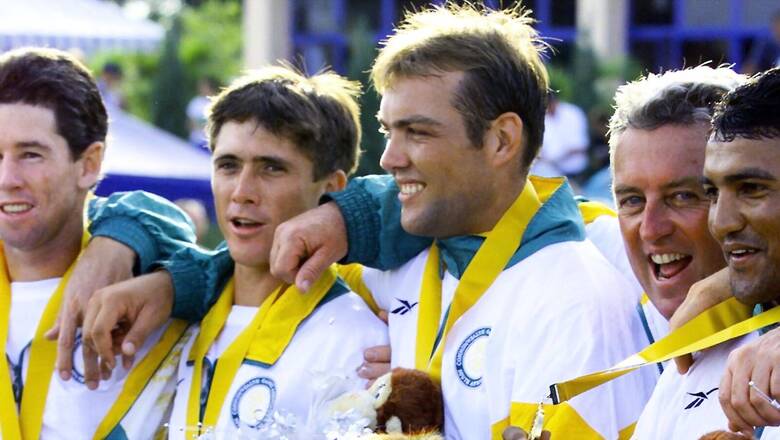
views
Cricket returns to a multi-discipline sports event after 1998. It featured last in the 1998 Commonwealth Games at Kuala Lumpur but then faded away for almost a quarter of a century before being included for the Birmingham Games, which is a major step towards being in the Olympics.
Also Read: Luck or Lack of Opportunity – Where is Sanju Samson Stuck Today?
Mind you, cricket was first played in the Olympics way back in 1900 in Paris. England, then a formidable world power, controlled the sport and influenced its inclusion. Host nation France was the only other country that participated in the event. In the play-off for the gold medal France was predictably outplayed.
The farcical competition eroded interest or support from other nations. After 1900, cricket was struck off the roster of multi-discipline events for almost a century till it was reintroduced – amid much brouhaha — in the 1998 Commonwealth Games at Kuala Lumpur.
The impact was minimal, for reasons that I’ll spell out shortly, and cricket was bumped off again for 24 years before making a comeback now in the ongoing Commonwealth Games in Birmingham.

But let me get back to the 1998 Kuala Lumpur games here. Most Commonwealth cricket playing countries were open to exploring the possibility of being part of a multi-nation event except BCCI. The Indian board thought that its turf was being encroached upon and feared an upheaval by the Indian Olympic Association. Remember, at this point in time, India was seeing an explosion in cricket consumption on TV. Consequently revenue from TV rights for India matches was becoming worth millions of dollars.
The fracas between BCCI and IOA reached fever pitch leading up to the KL Games. The IOA threw barbs at the BCCI for being narrow-minded, petty and looking only at profiteering rather than help sport grow in India. The BCCI in turn offered monetary help to the IOA for succouring other sports, but not committing to be part of the Games since that meant being subservient to the IOA.
The central government intervened unofficially and a settlement acceptable to both the BCCI and IOA was reached. India would send a team to Kuala Lumpur but not the one which usually represented India. Players would be divided into two teams, one to go to Kuala Lumpur, another for the Sahara Cup in Toronto against arch rivals Pakistan which was to be played simultaneously.
A formula to keep both parties happy seemed to have been worked out, except that it didn’t work out straightaway.
Sachin Tendulkar, the world’s pre-eminent cricketer then, became the bone of contention. The BCCI wanted him to be part of the team for the Sahara Cup, the IOA was unwilling to accept a team sans Tendulkar for the CWG.
After further intense and frenetic lobbying, the BCCI agreed to send Tendulkar, along with Anil Kumble, VVS Laxman and Rohan Gavaskar among others, to the CWG with Ajay Jadeja as captain. Another team representing the BCCI went to Toronto with Mohamed Azharuddin captain and including, among others, Sourav Ganguly, Rahul Dravid, Navjot Sidhu and Javagal Srinath.
CWG 2022: Birmingham Commonwealth Games Medals Tally
As it happened, India flopped in both the tournaments. In the CWG, the team was knocked out early. South Africa won the gold and Australia silver.
To make up, Tendulkar and Jadeja were flown urgently to Toronto but there was to be no redemption in the Sahara Cup either which was won 4-1 by Pakistan.
The tug-of-war between the IOA and BCCI subsided soon after. With the cricket board getting increasingly rich and powerful, and strongly legally protected as an independent sports body, there was not much the government could do too.
However, from the turn of the century, clamour for getting the sport back into the Olympics started rising steadily with important players voicing their approval, especially the likes of Aussies Steve Waugh, Adam Gilchrist, Virender Sehwag among many others. Their demand was not matched by the ICC and cricket boards, especially BCCI, who were afraid of losing turf and clout.
But in the past 12-15 years the desire to be part of the Olympic fold has gathered steam which gave the International Olympic Committee enough grounds to re-examine a time consuming sport like cricket’s credentials and feasibility as an Olympic discipline.
Three things have helped overcome major compunctions. One was structural. The T20 format ensures a match is completed in about 3 hours. This made cricket possible to fit into the Olympics schedule. Two, now there were enough teams of good quality available to keep alive competitiveness and excellence which is at the core of any sporting contest. Thirdly, and perhaps most vital in current circumstances, could the IOC ignore a sport which commands viewership in excess of 1.5 billion, mainly from India of course, which was among the healthiest economies in the world?
After a protracted period of going back and forth agonizingly, cricket was accepted as part of the CWG in Birmingham . The compromise was that it would only be a women’s team event. Yet this was a crucial breakthrough because it came on the back of an assurance that cricket could be part of the Paris 2024 Olympics for both men and women if all goes well in Birmingham.
With women’s cricket having grown by leaps and bounds in the past few years, and the world’s top teams – Australia, India, England, South Africa, Pakistan, Sri Lanka and Barbados – in action over the next 10-12 days, the competition should be intense and riveting. The IOC, IOA, and all cricket boards will be watching how the cricket event pans out in Birmingham.
If it is a success, in quality of cricket as well as public perception and acceptance, cricket – whether T20 or possibly even a T10 format — may well be back in the Olympics in a few years.
Get all the latest Cricket News, Schedule and Cricket Live Scores here



















Comments
0 comment